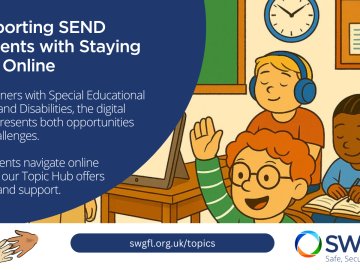Nowadays, fast, reliable broadband is essential
ICT is truly embedded in the curriculum and the Internet is an essential part of teaching and learning in every school, every day.
So, what do you need to think about when purchasing broadband for your school? We've put together our top 6 “must haves” for your schools internet service:
Safety and security
Getting the right balance between providing a safe environment for learners and one that empowers learners and teachers to explore the internet can be a challenge. Any school internet service should include some level of filtering, but preferably one that can be easily customised to meet your schools' needs.
It is essential to ensure that both your school network and school community remain safely and securely connected. Check what security measures, such as a firewall(s), are included. A robust firewall is a key ingredient to ensuring the school network remains safe, and in turn, contributes to data remaining safe, but often more so is the way it's set up and managed.
Click here for more information about 'Appropriate Filtering'.
Reliability
If your schools internet service network is down, not only will you lose access to all your internet services but it's likely to cause major disruption to teaching and learning as well as the operational running of the school. Any connectivity service should be designed to provide high 'uptime' (e.g. 99% uptime or better). It's also worth factoring in a back-up solution, should you have issues with your main circuit; find out what your provider can offer.
Value for money
Make sure that your package is tailored to meet your needs and check that there are no hidden costs (e.g. new router, technical change requests or additional support).
When reviewing the options available to you it's important that you compare like-for-like; not all internet services are the same, particularly those for schools. When making a comparison for your school, don't focus on price alone, but review appropriate bandwidth, support, security and safeguarding and other aspects that are important to you.
Transition support
If you are looking to change provider, look to get a dedicated point of contact to project manage your school transition from start to finish. The telecoms industry is not always easy to navigate, from managing the install of a new line, ordering new hardware or arranging installations and testing…it can all be a lot of work.
And don't forget to talk to your existing provider too; you're likely to need to provide a minimum notice period. It's worth planning an overlap to minimise risk of interruption to your schools internet service. Some providers can offer interim solutions should you be left without a service.
Technical Support
Check carefully who'll be providing technical support for your internet service and review the technical service desk opening hours for times when you may need help. Find out if you can make changes to your service quickly and easily and whether changes are included in the cost of the standard service or extra. If you don't have dedicated technical support staff based at your school, find out if the provider has technical support that can flex to meet the needs of non-technical staff.
Speed and Performance
Your schools requirements will depend on how much you use the internet, however, you will also need to consider your future needs. It's important that you have an internet connection to support the evolution of teaching and learning. With the increase of media-rich online content in the classroom, introduction of cloud services, and the growth of bring your own and 1:1 device schemes, bandwidth demand is growing rapidly. We can be confident that the bandwidth that you require right now is only going to increase. As a default we recommend 10Mbps+ for primary schools and 100Mbps+ for secondary schools, but this can vary a lot based on individual school needs.
Some connectivity solutions will always feature 'contention' (where bandwidth is effectively shared between users; you will typically find this a feature of solutions like ADSL and FttC). Ask providers whether the service has a level of contention [1] and ask about the providers own core network (as this is where additional congestion can be introduced). Look for a core network with spare capacity for growth and a provider with a strong investment strategy who can continue to add capacity as the demands from its customers continues to grow.
Ask providers about any download limits too; you don't want to be caught out by unexpected bills, and you may want to ask for your service to include unlimited usage. Unlimited usage allows you to just get on with using the internet for whatever you need without worrying about how much is being consumed.
Other things to consider
The previous six "must haves" are our key aspects, but you may also like to consider the following points in selecting the best internet service for your school.
- Service Levels: consider the type of service level agreement (SLA) you want. Are financial reimbursements important? Are 'excusing causes' present (that give the provider reasons why they won't meet the SLA)?
- Contract: does the contract provide the right level of protection for the school?
- Standards: will a supplier and a service that is compliant with certain standards provide additional confidence for the school?
- Supplier: is the supplier of good financial standing? Does the supplier have the right level of technical and educational expertise?
- Service scope: some solutions are 'wires-only', others are full 'managed services' (and there's a lot in-between too). A more inclusive service can save money in the longer term, and help the school to manage risk. Consider what scope of service would be most effective.
If you'd like to speak to a Schools Internet Service specialist about our solutions please call 0845 601 3203, or visit swgfl.org.uk/sis.






